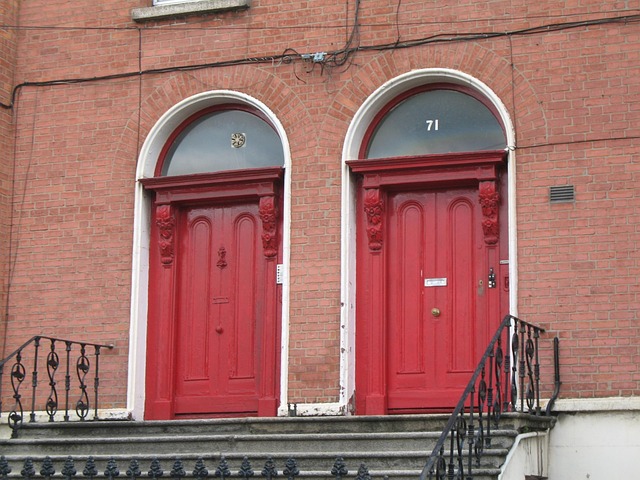Planning a move within Dublin requires careful consideration of diverse cost factors. Expenses vary based on distance, property size, time of year, and whether hiring professional movers or doing it yourself. Average moving costs range from €1000-€2000, with tips for keeping expenses low through planning, quote comparisons, using recycled materials, disassembling furniture, and negotiating prices. Budgeting is crucial, balancing DIY moves' lower costs with their demands versus professional movers' convenience at a higher price. Strategically setting a budget, researching average moving costs in Dublin, comparing quotes, and implementing cost-saving measures ensures a financially manageable move.
Moving house in Dublin can be an exciting but costly endeavor. Understanding the various factors that influence moving expenses is key to staying within your budget. This article provides a comprehensive guide on the average costs associated with relocating in Dublin, offering insights into packing, labor, and transportation expenses. Learn about strategic cost-cutting tips, potential pitfalls to avoid, and the DIY vs. professional movers debate. Discover effective strategies to stay on track financially while ensuring a smooth house moving experience in Dublin.
- Understanding the Cost Factors for Moving in Dublin
- Average Expenses: A Detailed Breakdown
- Tips to Keep Costs Low Without Sacrificing Quality
- Common Pitfalls to Avoid When Moving House
- DIY vs. Hiring Professionals: Which Option Suits Your Budget?
- Strategies for Staying Within Your Set Moving Budget
Understanding the Cost Factors for Moving in Dublin

When planning a move within Dublin, understanding the diverse cost factors is key to staying within your budget. The expense of relocating can vary significantly based on several variables, including the distance moved, size and type of property, time of year, and whether you opt for professional movers or do it yourself. In Dublin, where real estate values are high, packing up and moving into a new home can be a substantial financial undertaking.
The cost to move house in Dublin typically encompasses packing materials, labor (either professional movers or your own time and effort), vehicle rental or transportation costs, insurance for fragile items, and various administrative fees. It’s important to remember that these expenses can add up quickly, especially if you’re moving a large home or have many belongings. Researching and comparing quotes from multiple movers, as well as planning ahead to minimize packing materials, can help keep your moving expenses in check.
Average Expenses: A Detailed Breakdown

Moving house can be an exciting yet stressful process, and understanding the financial implications is a crucial step. In Dublin, the cost to move can vary greatly depending on several factors, but we’ll break down the average expenses associated with relocating within the city.
A typical household in Dublin might expect to pay around €1000-€2000 for a local move, including packing materials, labor, and transportation. This range can be influenced by the size of the property—smaller apartments or houses will generally have lower moving costs compared to larger homes. Additionally, factors like access to the property (for example, if it’s on a tight corner or requires special equipment), the time of year (peak moving seasons can increase prices), and whether you’re hiring professionals or doing it yourself can also impact these expenses.
Tips to Keep Costs Low Without Sacrificing Quality

When moving house in Dublin, keeping costs low is a priority for many. To ensure you don’t overspend, consider these practical tips that maintain quality without breaking the bank. Firstly, plan your move meticulously. Create a detailed packing list and schedule to optimize efficiency on the day. This reduces labor costs by minimizing loading and unloading time. Secondly, source affordable removal companies in Dublin offering competitive rates. Request quotes from multiple providers and compare services, insurance, and pricing. Negotiating prices can often secure you a better deal.
Additionally, opt for cost-effective packing materials. Use recycled boxes, newspapers, and blankets to pack your belongings securely without paying premium prices. For furniture and larger items, consider disassembling pieces when possible, saving on transportation costs. Lastly, if time permits, delay non-essential purchases until after the move. This can curb impulse buying, ensuring you stay within budget. Remember, a well-planned, strategic approach to your Dublin house move can result in significant savings without compromising quality.
Common Pitfalls to Avoid When Moving House

When planning a move to Dublin, understanding the potential costs is crucial. One common pitfall to avoid is underestimating the expenses involved. Moving can be unpredictable, and unforeseen challenges often arise, leading to additional charges. For instance, issues with access to your new property due to narrow streets or limited parking might require specialized transport solutions, adding to your budget. Similarly, unexpected repairs or renovations needed before you can settle in could significantly impact your finances.
Another trap to steer clear of is failing to account for various service connections and admin fees. Switching utilities, arranging insurance, and updating your address with numerous institutions can incur hidden costs. Additionally, packing materials and labor expenses often escalate faster than expected. To stay within budget, create a detailed plan, obtain multiple quotes from removal companies, and be prepared to negotiate. Researching average moving costs in Dublin will equip you with the knowledge to recognize and avoid these common pitfalls.
DIY vs. Hiring Professionals: Which Option Suits Your Budget?

When planning your house move in Dublin, one of the biggest considerations is the budget. A common dilemma is whether to tackle the move yourself (DIY) or hire professional movers. The cost of moving in Dublin can vary greatly depending on several factors like distance, property size, and the level of service required.
DIY moves can be significantly cheaper, as you only pay for fuel, packing materials, and potentially a few hours of labor if you enlist friends for heavy lifting. However, this option requires significant time, planning, and physical effort. On the other hand, hiring professionals ensures a stress-free move with expert handling of your belongings. While it’s more expensive than DIY, it saves you time and reduces the risk of injury or damage. When considering how much does it cost to move house in Dublin, weigh these options based on your budget, available time, and the level of assistance you need.
Strategies for Staying Within Your Set Moving Budget

Staying within your set moving budget can be achieved through strategic planning and efficient resource allocation. Firstly, determine a realistic budget that aligns with your financial capabilities. Researching average moving costs in Dublin is essential; understanding the market rates for various services will help you set a cap on expenses. Many movers offer tailored packages, so compare different quotes to find the best value for money.
Consider the following cost-saving strategies: do-it-yourself packing for non-fragile items, which can significantly reduce labor costs; negotiate prices with movers for larger jobs; and avoid peak moving seasons when rates tend to be higher. Additionally, downsize your belongings by decluttering or donating items you no longer need, as this will lower the overall cost of transportation and storage.
Moving house in Dublin can be a significant financial undertaking, but with careful planning and strategic decision-making, it’s possible to stay within your budget. By understanding the cost factors unique to Dublin, breaking down average expenses, and employing tips for keeping costs low, you can ensure a smooth transition without overspending. Avoiding common pitfalls and thoughtfully considering DIY options versus professional services will also contribute to a successful—and budget-friendly—move. With the right approach, you can navigate the process confidently, making your move an enjoyable experience rather than a financial burden.
